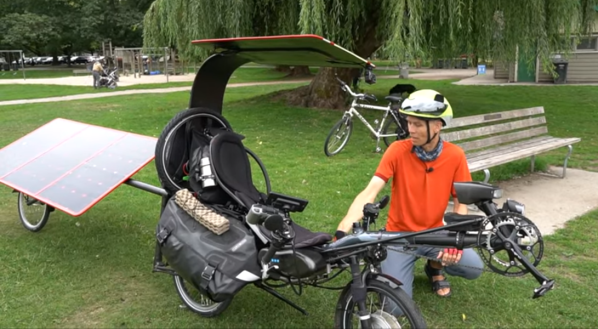[Mark Havran] is on a mission to complete a solo trip around the world on his bicycle. For such a long and arduous trip, unsupported by anything other than what he and his bike can carry, he has devised a unique vehicle with everything he needs to accomplish his journey. This bike has plenty of things we’ve seen before, such as solar panels and an electric motor, but plenty of things that are completely novel as well.
For such long-distance trips, the preferred style of bike for most is a recumbent. This allows the rider to take a more relaxed position while riding and is much more efficient than an upright bike as well. [Mark]’s bike also uses a hub motor in the front wheel powered by a set of lithium ion battery packs. The bike also utilizes four solar panels with three charge controllers (to reduce the impacts of panel shading) laid out with three of the panels on a trailer and a single panel above the bike to give him some shade while riding. [Mark] also built solar tracking abilities into each of the two arrays, allowing the solar panels to automatically rotate around the trailer and bike to more efficiently capture sunlight than a statically-mounted set of panels would be able to. They can also be manually controlled in case of high winds.
From the video linked below, we can see a number of other added features to the bike that will enable it to make such a long trip. First, he is getting a new motor which has a number of improvements over his old one, which he put over 30,000 kilometers on. Second, there are some safety features that deserve a mention such as his lighting setup borrowed from emergency response vehicles, and even includes a fire extinguisher for any catastrophic electrical failures. Of course, if you aren’t optimizing your recumbent electric bike for long distance there are some other modifications you could make to it as well to improve its off-road abilities. Best of luck, Mark!
Continue reading “DIY Solar Ebike Goes Around The World, We Hope”












